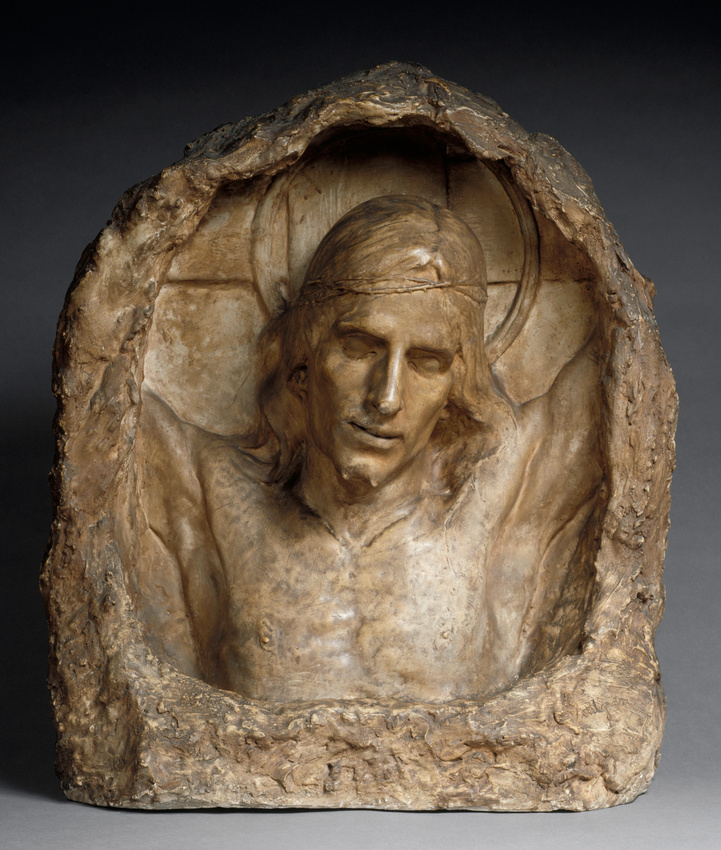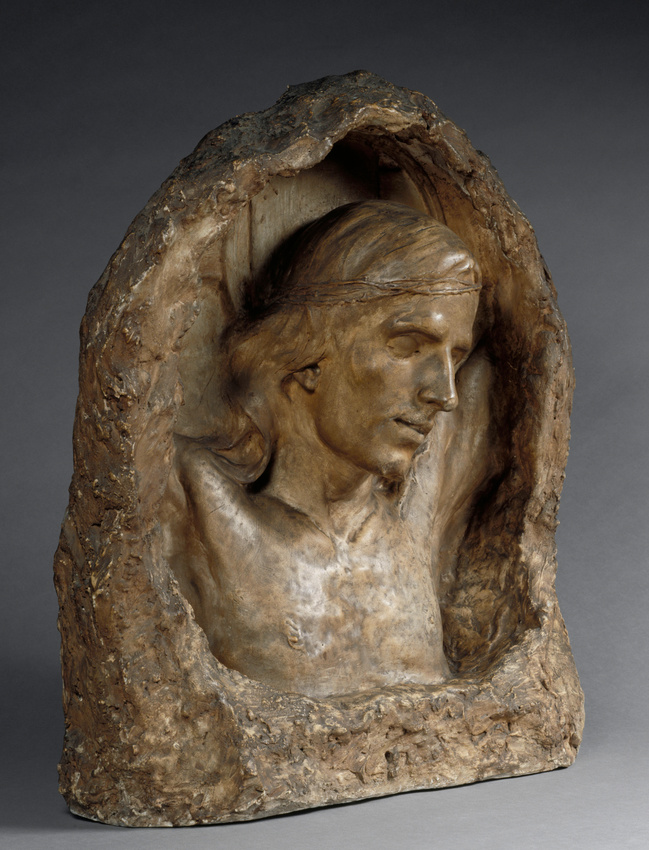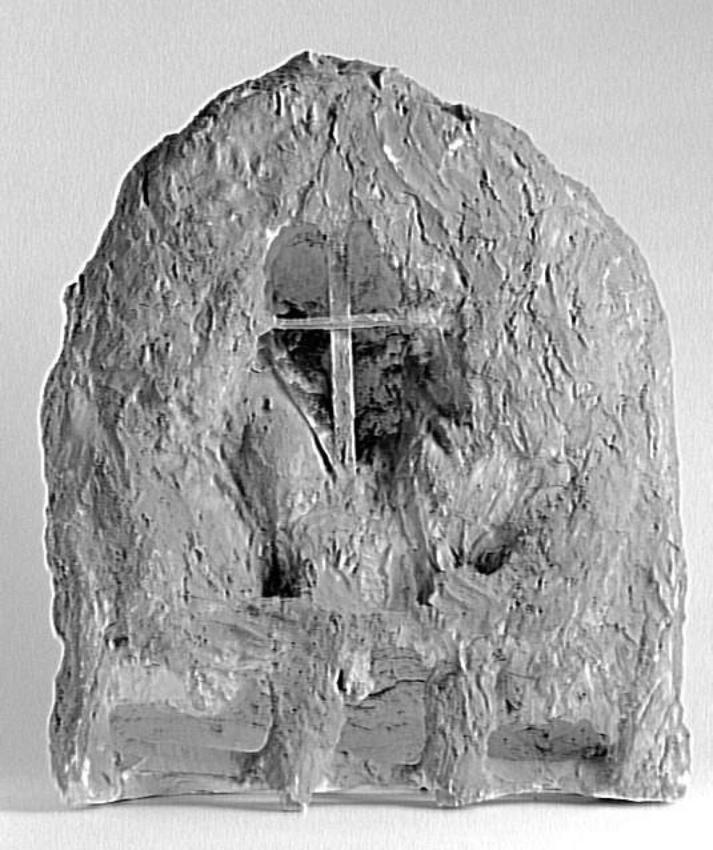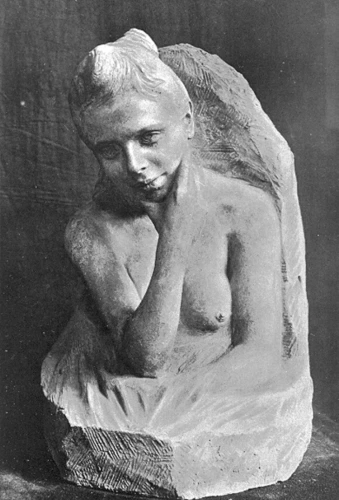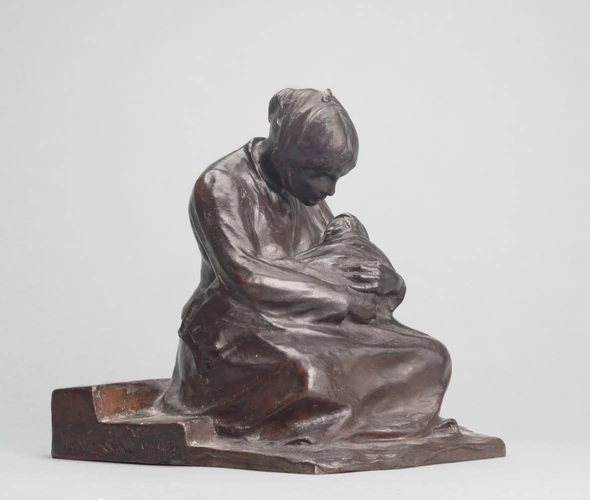Christ
Between 1889 and 1901, the Finnish artist Vallgren showed his Christ in several European exhibitions for the avant-garde, in various materials and with numerous variants. The plaster version at the Musée d'Orsay was probably shown in the Munich Secession in 1893 then at the Libre Esthétique (Free Aesthetic) in Brussels in 1895.
During the first presentation of a copy of the Christ, at the 1889 Universal Exhibition, the work attracted critical attention. Thus Gabriel Hanotaux, under the pseudonym Chardin, wrote: "Firstly it is a head of Christ in relief, a small piece only as big as two hands, but so powerful, so gentle, so expressive that I was thunderstruck. I spent a long time there trying to grasp the secret of this extraordinary vision, of this smile dancing on his lips, this mystical expression, emerging through the half-closed eyes". The comment is clearly influenced by the Symbolist aesthetic, to which Vallgren's religious and elegiac works could easily be compared.
The dark beige colour of the plaster is due to the application of a coating of lac over the whole surface, intended to protect the work while a cast was taken. But we know that Vallgren liked to use many colours. Many of his works – such as Pain, also kept at the Musée d'Orsay –reveal his experiments with subtle patinas, which were, moreover, highly valued by art lovers and critics.
